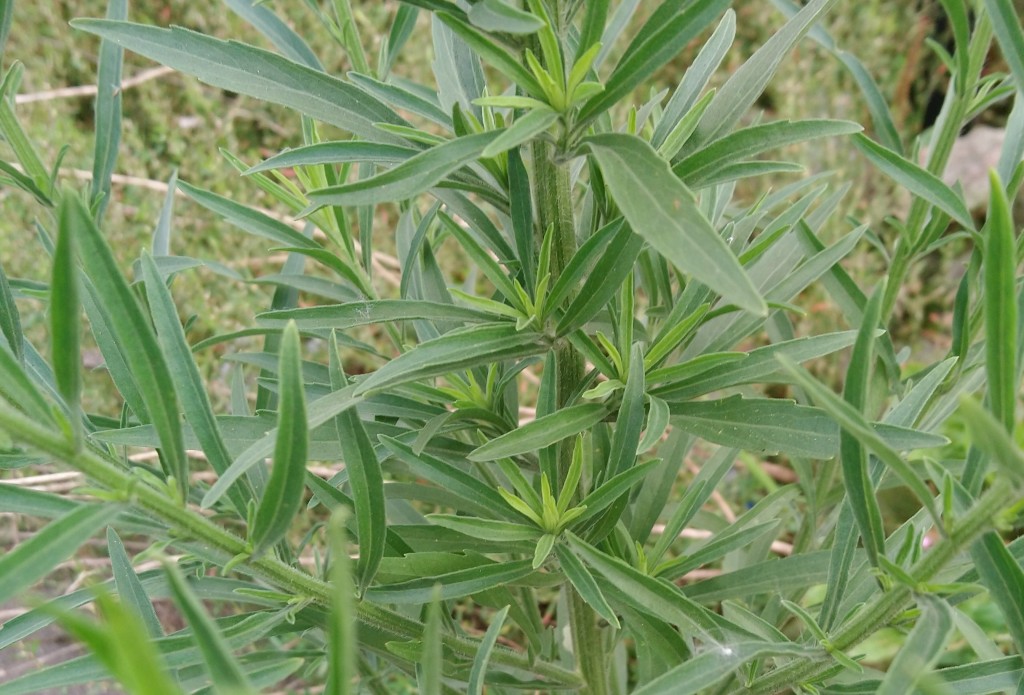
[133] Erigeron canadensis, Horseweed
Erigeron sumatrensis, Guernsey Fleabane
Introduction
Erigeron canadensis, Horseweed, is an annual plant native to Central and North America but now naturalised and invasive in much of Eurasia and Australia. It is also called Canadian Horseweed, Canadian Fleabane, Coltstail, Marestail or Butterweed.
Erigeron sumatrensis, Guernsey Fleabane, is very similar but slightly larger, probably native to South America, also naturalised and invasive in many countries. Its other names include Tall Fleabane, Broad-leaved Fleabane, White Horseweed and Sumatran Fleabane. It is available as a cultivated garden plant.
I will consider both species together.
Taxonomy
Kingdom – Plants
Division – Vascular Plants
Class – Angiosperms (Flowering Plants)
Order – Asterales
Family – Asteraceae
Genus – Erigeron
Scientific Name – Erigeron canadensis, Erigeron sumatrensis
Both species have Conyza synonyms.
Names
Common Names are always difficult. There is a genus called Pulicaria, which we call Fleabanes. In particular Pulicaria dysenterica is called Common Fleabane. Americans do it the other way round. They call Erigeron canadensis Fleabane and to them all Pulicaria are False Fleabanes.
I would say, go for Scientific Names, but be careful. For both of these species the genus may be Erigeron or it might be Conyza. Both names are used for both species.
That leaves us with hundreds of species called fleabanes in Erigeron and Conyza and Pulicaria – and other genera – derived from the idea that the dried plants repelled fleas or were poisonous to fleas.
Erigeron comes from Greek ‘eri-geron’ meaning ‘early morning – old man’ from the white hairs of the fruit soon after flowering. Conyza is apparently the Greek for fleabane.
The origins of Erigeron sumatrensis must have been obscure – unless the botanists got Guernsey and Sumatra mixed up.
Description
My first impression of these species is that they are like [041] Mugwort (with a name not completely unrelated to fleabane,) but narrower.
But unlike Mugwort, these two are annuals. They don’t begin to appear until August but they do grow rapidly. A single stem soon reaches a height of a metre or two.
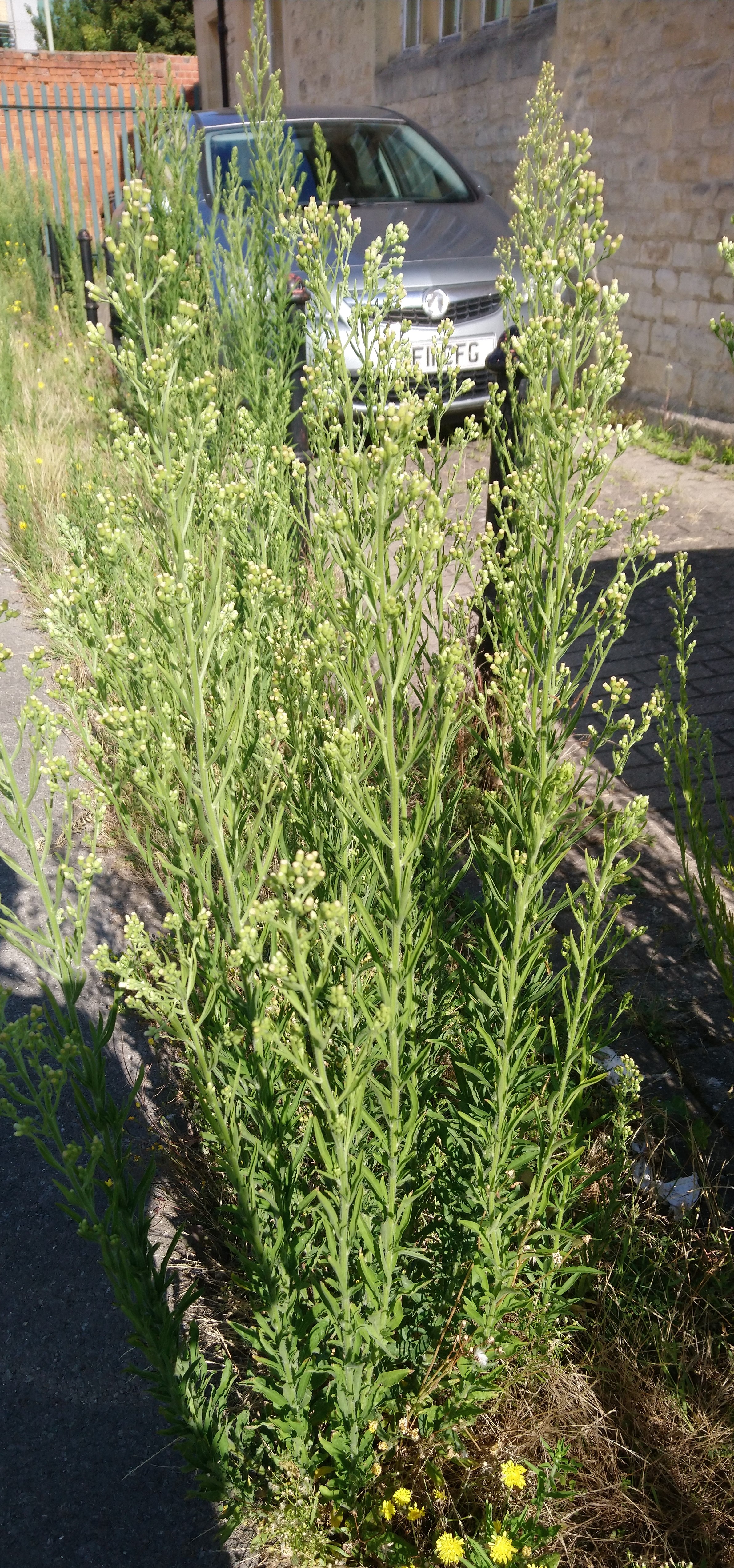
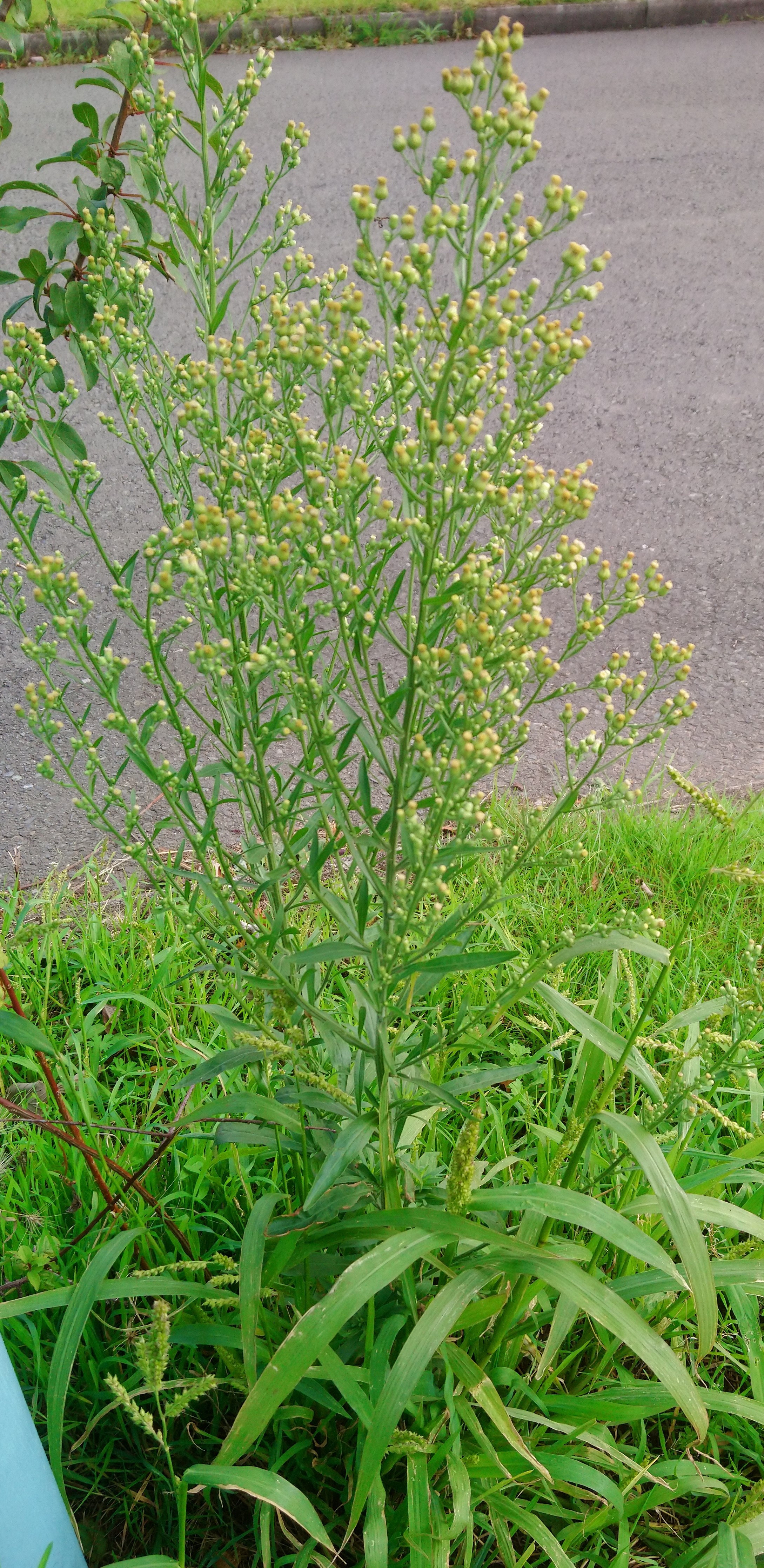
Everything about Erigeron is unimpressive. Long thin stems, long thin leaves, and tiny white flowers that, even in large numbers, are almost unnoticed.
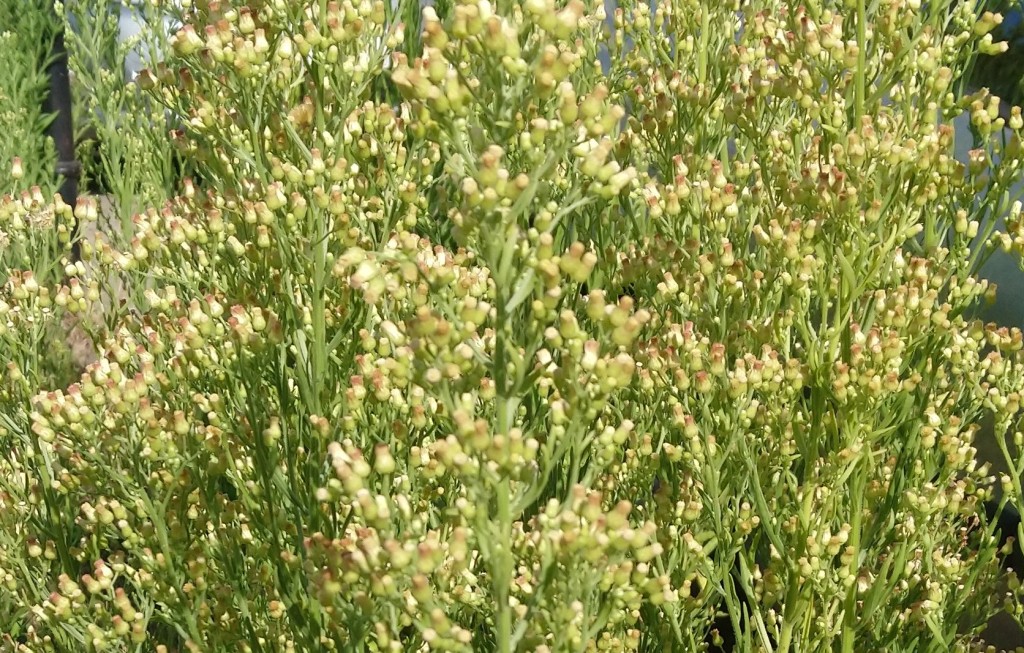
They become a little more noticeable when the flowers turn to seed heads much like tiny dandelion clocks.

Later in the year they spread a bit more and develop more leaves at the base.
There is nothing obvious to distinguish the two species but E sumatrensis does grow significantly larger.
Habitat and use
Both are widespread and seem to grow everywhere. Both are available for cultivation.
Erigeron canadensis seems to spring up particularly from cracks in pavements and the cracks between the road surface and the pavement.


Pictured below is presumably Erigeron Sumatrensis from local public ornamental gardens, where it looks as if they have been planted deliberately.
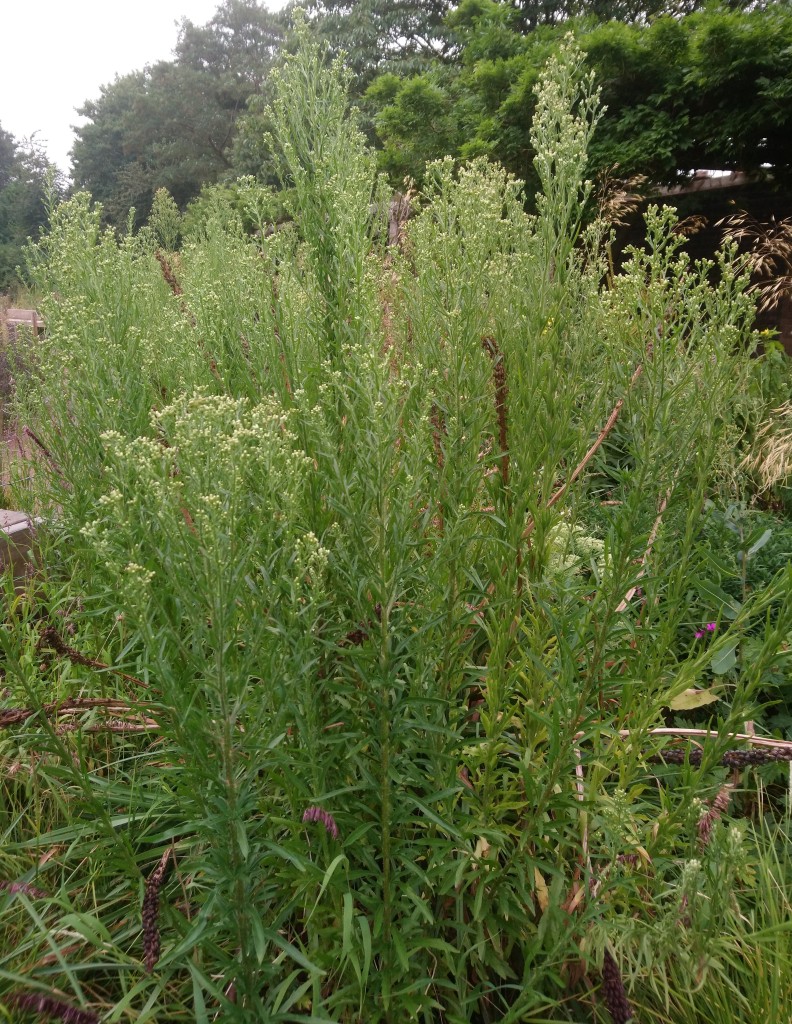
Other Notes
I can’t see these other than as invasive weeds.
See also
Not one of my favourites but we have some other invasive weeds about. As stated above, [041] Mugwort has much in common with these species.

